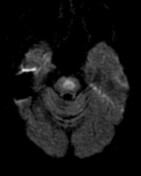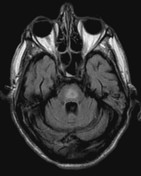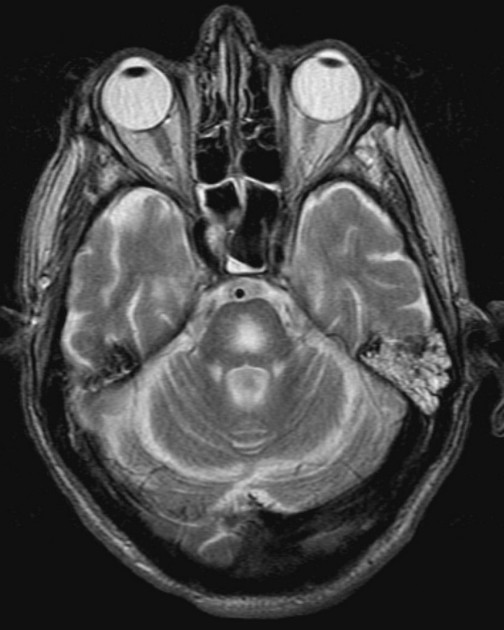Presentation
History unknown.
Patient Data
Age: Elderly
From the case:
Central pontine myelinolysis



Download
Info

High T2 and DWI signal in the pons, sparing the periphery in a patient with atrophy, which appears more marked in the cerebellum. Note how the signal abnormality crosses the mid-line making ischemia unlikely, as the pontine perforators are end-arteries which do not cross the mid-line.
Case Discussion
Unfortunately I do not have evidence supporting the diagnosis central pontine myelinolysis. Nonetheless in a patient with cerebellar atrophy this is the likely diagnosis.




 Unable to process the form. Check for errors and try again.
Unable to process the form. Check for errors and try again.